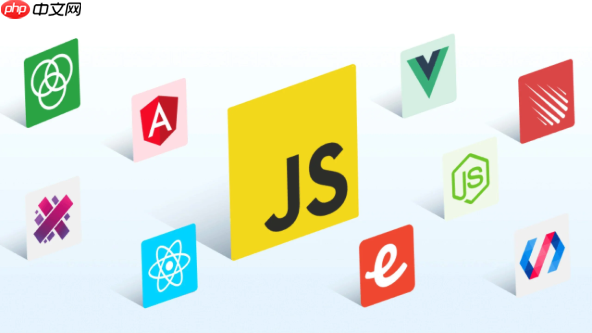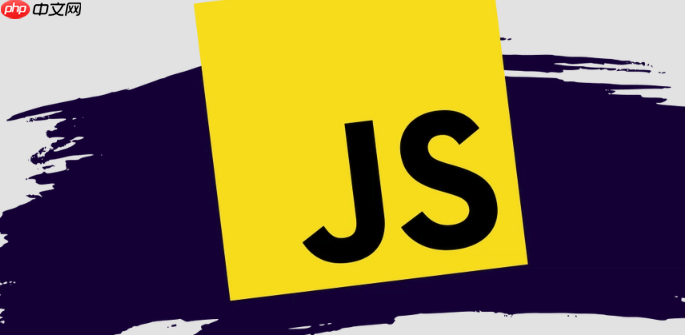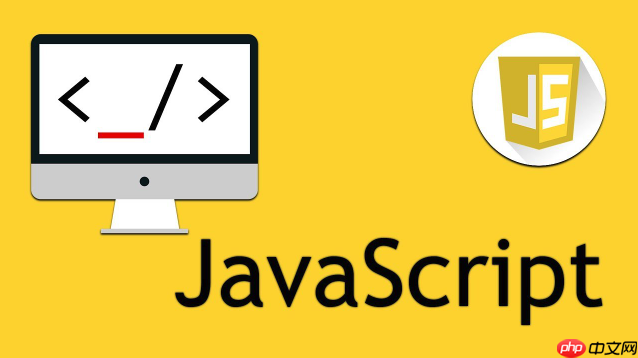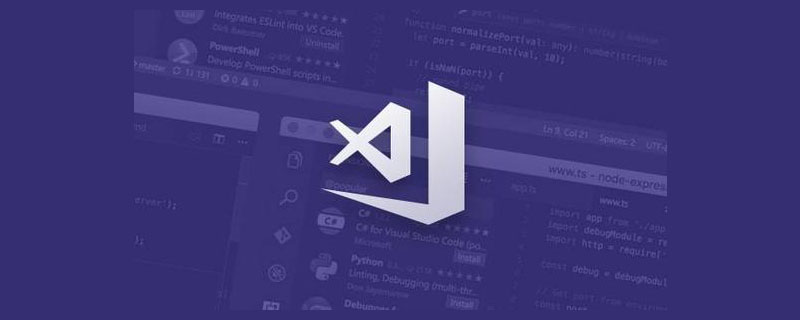如何實(shí)現(xiàn)粒子動(dòng)畫效果?1.使用JavaScript操作canvas,初始化canvas元素并獲取上下文;2.定義particle類,包含位置、速度、大小、顏色等屬性,并實(shí)現(xiàn)draw()和update()方法;3.創(chuàng)建粒子數(shù)組,隨機(jī)生成多個(gè)粒子實(shí)例;4.使用requestanimationframe創(chuàng)建動(dòng)畫循環(huán),不斷更新和繪制粒子;5.可添加交互效果,如鼠標(biāo)移動(dòng)影響粒子運(yùn)動(dòng)。優(yōu)化性能的方法包括減少粒子數(shù)量、使用離屏canvas、優(yōu)化更新邏輯、減少狀態(tài)切換、使用web workers、合理使用透明度、避免shadowblur。實(shí)現(xiàn)復(fù)雜運(yùn)動(dòng)包括吸引力、排斥力、跟隨效果,通過(guò)修改update()方法引入力學(xué)模型。交互性可通過(guò)鍵盤、觸摸、音頻輸入、重力感應(yīng)等方式實(shí)現(xiàn)。

實(shí)現(xiàn)粒子動(dòng)畫效果,核心在于使用JavaScript操作Canvas,模擬大量粒子的運(yùn)動(dòng)和交互,從而創(chuàng)造出各種炫酷的視覺(jué)效果。這涉及到粒子的創(chuàng)建、屬性定義、運(yùn)動(dòng)規(guī)律、以及渲染等多個(gè)環(huán)節(jié)。

解決方案

-
Canvas初始化:

首先,在html中創(chuàng)建一個(gè)
<canvas id="particleCanvas"></canvas> <script> const canvas = document.getElementById('particleCanvas'); const ctx = canvas.getContext('2d'); canvas.width = window.innerWidth; canvas.height = window.innerHeight; </script> -
粒子類定義:
創(chuàng)建一個(gè)Particle類,用于表示單個(gè)粒子。每個(gè)粒子應(yīng)包含位置(x, y)、速度(vx, vy)、大小(radius)、顏色等屬性。
class Particle { constructor(x, y, vx, vy, radius, color) { this.x = x; this.y = y; this.vx = vx; this.vy = vy; this.radius = radius; this.color = color; } draw() { ctx.beginPath(); ctx.arc(this.x, this.y, this.radius, 0, Math.PI * 2); ctx.fillStyle = this.color; ctx.fill(); } update() { this.x += this.vx; this.y += this.vy; // 邊界檢測(cè),簡(jiǎn)單反彈 if (this.x + this.radius > canvas.width || this.x - this.radius < 0) { this.vx = -this.vx; } if (this.y + this.radius > canvas.height || this.y - this.radius < 0) { this.vy = -this.vy; } } } -
粒子數(shù)組創(chuàng)建:
創(chuàng)建一個(gè)粒子數(shù)組,并隨機(jī)生成多個(gè)粒子實(shí)例,添加到數(shù)組中。
const particles = []; const numParticles = 100; // 粒子數(shù)量 for (let i = 0; i < numParticles; i++) { const radius = Math.random() * 5 + 1; // 1-6 const x = Math.random() * (canvas.width - radius * 2) + radius; const y = Math.random() * (canvas.height - radius * 2) + radius; const vx = (Math.random() - 0.5) * 2; // -1 到 1 const vy = (Math.random() - 0.5) * 2; // -1 到 1 const color = `rgba(${Math.random() * 255}, ${Math.random() * 255}, ${Math.random() * 255}, 0.8)`; particles.push(new Particle(x, y, vx, vy, radius, color)); } -
動(dòng)畫循環(huán):
使用requestAnimationFrame創(chuàng)建一個(gè)動(dòng)畫循環(huán),不斷更新每個(gè)粒子的位置,并重新繪制Canvas。
function animate() { requestAnimationFrame(animate); ctx.clearRect(0, 0, canvas.width, canvas.height); // 清空畫布 for (let i = 0; i < particles.length; i++) { particles[i].update(); particles[i].draw(); } } animate(); -
交互效果(可選):
可以添加鼠標(biāo)交互,例如鼠標(biāo)懸停時(shí)改變粒子屬性,或鼠標(biāo)點(diǎn)擊時(shí)產(chǎn)生新的粒子。
canvas.addEventListener('mousemove', (event) => { const mouseX = event.clientX; const mouseY = event.clientY; for (let i = 0; i < particles.length; i++) { const dx = mouseX - particles[i].x; const dy = mouseY - particles[i].y; const distance = Math.sqrt(dx * dx + dy * dy); if (distance < 50) { // 鼠標(biāo)靠近時(shí)加速 particles[i].vx += dx * 0.01; particles[i].vy += dy * 0.01; } } });
如何優(yōu)化Canvas粒子動(dòng)畫性能,避免卡頓?
優(yōu)化Canvas粒子動(dòng)畫性能,關(guān)鍵在于減少不必要的計(jì)算和渲染。可以從以下幾個(gè)方面入手:
-
減少粒子數(shù)量: 粒子數(shù)量是影響性能的最直接因素。在保證視覺(jué)效果的前提下,盡量減少粒子數(shù)量。可以使用更復(fù)雜的渲染技巧來(lái)彌補(bǔ)粒子數(shù)量的不足。
-
使用離屏Canvas: 對(duì)于靜態(tài)不變的部分,可以先在離屏Canvas上繪制,然后一次性將離屏Canvas的內(nèi)容復(fù)制到主Canvas上。
-
優(yōu)化粒子更新邏輯: 避免在每次更新時(shí)進(jìn)行復(fù)雜的計(jì)算。例如,可以使用查表法代替復(fù)雜的數(shù)學(xué)運(yùn)算。
-
減少Canvas狀態(tài)切換: Canvas狀態(tài)切換(如fillStyle、strokeStyle等)會(huì)帶來(lái)性能開(kāi)銷。盡量減少狀態(tài)切換的次數(shù)。
-
合理使用透明度: 大量半透明粒子會(huì)增加渲染負(fù)擔(dān)。可以適當(dāng)調(diào)整粒子的透明度,或者使用其他技巧來(lái)模擬透明效果。
-
避免使用shadowBlur: shadowBlur會(huì)顯著降低渲染性能。盡量避免使用,或者使用其他方式來(lái)模擬陰影效果。
如何實(shí)現(xiàn)更復(fù)雜的粒子運(yùn)動(dòng)效果,例如吸引、排斥、跟隨?
實(shí)現(xiàn)更復(fù)雜的粒子運(yùn)動(dòng)效果,需要修改粒子的update()方法,引入更復(fù)雜的力學(xué)模型。
-
吸引力:
update() { const dx = mouseX - this.x; // 假設(shè)mouseX和mouseY是鼠標(biāo)坐標(biāo) const dy = mouseY - this.y; const distance = Math.sqrt(dx * dx + dy * dy); const force = (distance < 100) ? 0.1 : 0; // 距離越近,吸引力越大 this.vx += dx / distance * force; this.vy += dy / distance * force; this.x += this.vx; this.y += this.vy; } -
排斥力:
與吸引力類似,但力的方向相反。
update() { const dx = mouseX - this.x; const dy = mouseY - this.y; const distance = Math.sqrt(dx * dx + dy * dy); const force = (distance < 50) ? -0.2 : 0; // 距離越近,排斥力越大 this.vx += dx / distance * force; this.vy += dy / distance * force; this.x += this.vx; this.y += this.vy; } -
跟隨:
讓粒子跟隨鼠標(biāo)的運(yùn)動(dòng)軌跡。可以使用簡(jiǎn)單的平滑算法。
update() { this.vx = (mouseX - this.x) * 0.1; // 0.1是平滑系數(shù) this.vy = (mouseY - this.y) * 0.1; this.x += this.vx; this.y += this.vy; } -
粒子間的相互作用:
需要遍歷所有粒子,計(jì)算它們之間的距離和力,并更新粒子的速度。這會(huì)顯著增加計(jì)算量,需要謹(jǐn)慎優(yōu)化。
如何將粒子動(dòng)畫與用戶輸入結(jié)合,創(chuàng)造更具交互性的體驗(yàn)?
將粒子動(dòng)畫與用戶輸入結(jié)合,可以創(chuàng)造出更具交互性的體驗(yàn)。除了前面提到的鼠標(biāo)交互,還可以使用鍵盤、觸摸等輸入方式。
-
鍵盤控制:
例如,可以使用鍵盤的上下左右鍵來(lái)改變粒子的運(yùn)動(dòng)方向。
document.addEventListener('keydown', (event) => { if (event.key === 'ArrowUp') { particles.forEach(particle => particle.vy -= 1); } else if (event.key === 'ArrowDown') { particles.forEach(particle => particle.vy += 1); } // ... 其他方向 }); -
觸摸控制:
在移動(dòng)設(shè)備上,可以使用觸摸事件來(lái)控制粒子的運(yùn)動(dòng)。
canvas.addEventListener('touchstart', (event) => { const touch = event.touches[0]; mouseX = touch.clientX; mouseY = touch.clientY; }); canvas.addEventListener('touchmove', (event) => { const touch = event.touches[0]; mouseX = touch.clientX; mouseY = touch.clientY; }); -
音頻輸入:
可以使用Web Audio API獲取音頻輸入,并根據(jù)音頻的頻率和幅度來(lái)控制粒子的屬性,例如顏色、大小、速度等。
-
重力感應(yīng):
在移動(dòng)設(shè)備上,可以使用重力感應(yīng)器來(lái)控制粒子的運(yùn)動(dòng)方向。
關(guān)鍵在于將用戶輸入轉(zhuǎn)化為粒子的屬性變化,并保持動(dòng)畫的流暢性和響應(yīng)性。
.jpg)

















.png)
